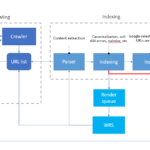Orthogonal Methods for Particle Analysis in Biotherapeutics
By Dr. Vikas Malhotra
Understanding the Role of Orthogonal Methods in Biopharmaceutical Characterization
Comprehensive characterization of biotherapeutics is a critical step in ensuring product quality, stability, and efficacy. Given the inherent complexity of biologics, no single analytical technique can provide a complete understanding of all relevant Critical Quality Attributes (CQAs). This is where orthogonal methods come into play—providing independent, complementary insights into the same attribute using distinct measurement principles.
Orthogonal analytical approaches are vital in particle analysis, protein aggregation studies, and drug product comparability assessments. By leveraging different analytical methods, scientists can minimize bias, verify results, and achieve a more robust understanding of particle characteristics that impact product safety and performance.
What Are Orthogonal Methods?
Orthogonal methods are independent analytical techniques designed to measure the same sample attribute—such as particle size, concentration, or morphology—using different physical principles.
Every analytical method introduces some degree of bias due to its measurement mechanism, calibration standards, or sample preparation steps. When two orthogonal techniques are applied, each provides an independent dataset that can be compared to confirm the accuracy and reliability of results.
Example: Orthogonal Particle Analysis Methods
In particle characterization, orthogonal methods must operate over the same dynamic range to ensure meaningful comparison. For instance, when analyzing subvisible particles (2–100 μm), Flow Imaging Microscopy (FIM) and Light Obscuration (LO) are considered orthogonal techniques.
- Flow Imaging Microscopy (FIM): Uses digital imaging to capture high-resolution particle images, allowing detailed morphological analysis.
- Light Obscuration (LO): Uses light blockage to count and size particles based on the amount of light they scatter or block.
Despite measuring the same CQA—particle size distribution—FIM and LO rely on distinct physical principles. Combining their results enhances accuracy, ensures compliance with pharmacopeia guidelines (e.g., USP <788>), and provides a more complete understanding of particle behavior in biopharmaceutical formulations.
Why Orthogonal Methods Are Critical for Biotherapeutic Development
1. Ensuring Accuracy and Reducing Bias
Using multiple, principle-different methods minimizes systematic errors. If both methods yield consistent results, confidence in the data’s accuracy is significantly enhanced.
2. Regulatory Compliance and Data Integrity
Regulatory agencies, including the FDA and EMA, often expect evidence of orthogonal validation for critical measurements. Orthogonal data strengthens the scientific foundation of product comparability, stability studies, and batch release decisions.
3. Supporting Product Consistency and Shelf-Life Predictions
Accurate CQA data obtained from orthogonal methods is essential for estimating shelf life, ensuring batch-to-batch consistency, and maintaining therapeutic efficacy throughout the product’s lifecycle.
What Are Complementary Methods?
While orthogonal methods analyze the same attribute through different measurement mechanisms, complementary methods provide additional information about different or related attributes.
Complementary vs. Orthogonal Methods
| Relationship | Definition | Example |
|---|---|---|
| Orthogonal | Different measurement principles for the same attribute | Flow Imaging Microscopy (FIM) vs. Light Obscuration (LO) for particle size |
| Complementary | Different methods for different attributes or dynamic ranges | FIM for subvisible particles vs. Dynamic Light Scattering (DLS) for nanoparticles |
Complementary techniques enhance the overall understanding of a biopharmaceutical product by providing insights into additional CQAs, such as protein conformation, aggregation, or viral vector integrity.
Orthogonal and Complementary Techniques for Particle Size Analysis
Orthogonal Techniques to Flow Imaging Microscopy (FIM)
- Light Obscuration (LO):
LO is a widely accepted orthogonal method to FIM for assessing subvisible particles. By combining LO’s particle counting precision with FIM’s image-based morphological data, scientists obtain a more complete and validated view of particle size distribution. - FlowCam LO System:
Instruments like FlowCam LO integrate both FIM and LO capabilities, enabling orthogonal measurements from a single sample aliquot. This approach streamlines workflows, reduces sample consumption, and simplifies bridging studies between legacy and modern analytical methods.
Complementary Techniques to FIM
Complementary techniques expand particle analysis across different size ranges or different CQAs:
- Dynamic Light Scattering (DLS): Measures nanoparticles (<1 μm) and complements FIM’s subvisible range.
- Size Exclusion Chromatography (SEC): Provides insight into soluble aggregates and nanoparticle populations.
- Circular Dichroism (CD): Monitors protein secondary structure and folding—important for confirming that particle formation hasn’t altered protein conformation.
- Analytical Ultracentrifugation (AUC): Determines full/empty capsid ratios in gene therapy vectors, complementing particle data from FIM.
Integrating Orthogonal and Complementary Data for Comprehensive Quality Control
A holistic analytical strategy that combines orthogonal and complementary methods provides a multi-dimensional view of product quality. By validating key CQAs through orthogonal analysis and supplementing that understanding with complementary measurements, researchers can:
- Strengthen regulatory submissions
- Enhance formulation stability
- Improve process understanding and control
- Ensure long-term batch consistency and comparability
Conclusion
Orthogonal methods are indispensable tools for accurate particle analysis and biotherapeutic characterization. Techniques such as Flow Imaging Microscopy and Light Obscuration provide independent, confirmatory measurements that ensure data accuracy, regulatory compliance, and product integrity.
When integrated with complementary analytical approaches like Dynamic Light Scattering or Circular Dichroism, these methods enable a complete, scientifically rigorous understanding of complex biological systems.
For biopharmaceutical scientists and analytical developers, adopting orthogonal and complementary analytical strategies represents a best practice for quality assurance, comparability studies, and regulatory success in modern biologics development.
Keywords
Orthogonal Methods, Particle Analysis, Flow Imaging Microscopy, Light Obscuration, Biotherapeutics, Critical Quality Attributes, Complementary Techniques, Subvisible Particles, Biopharmaceutical Characterization, FlowCam LO, Protein Aggregation, USP <788>, Dynamic Light Scattering, Analytical Ultracentrifugation.









